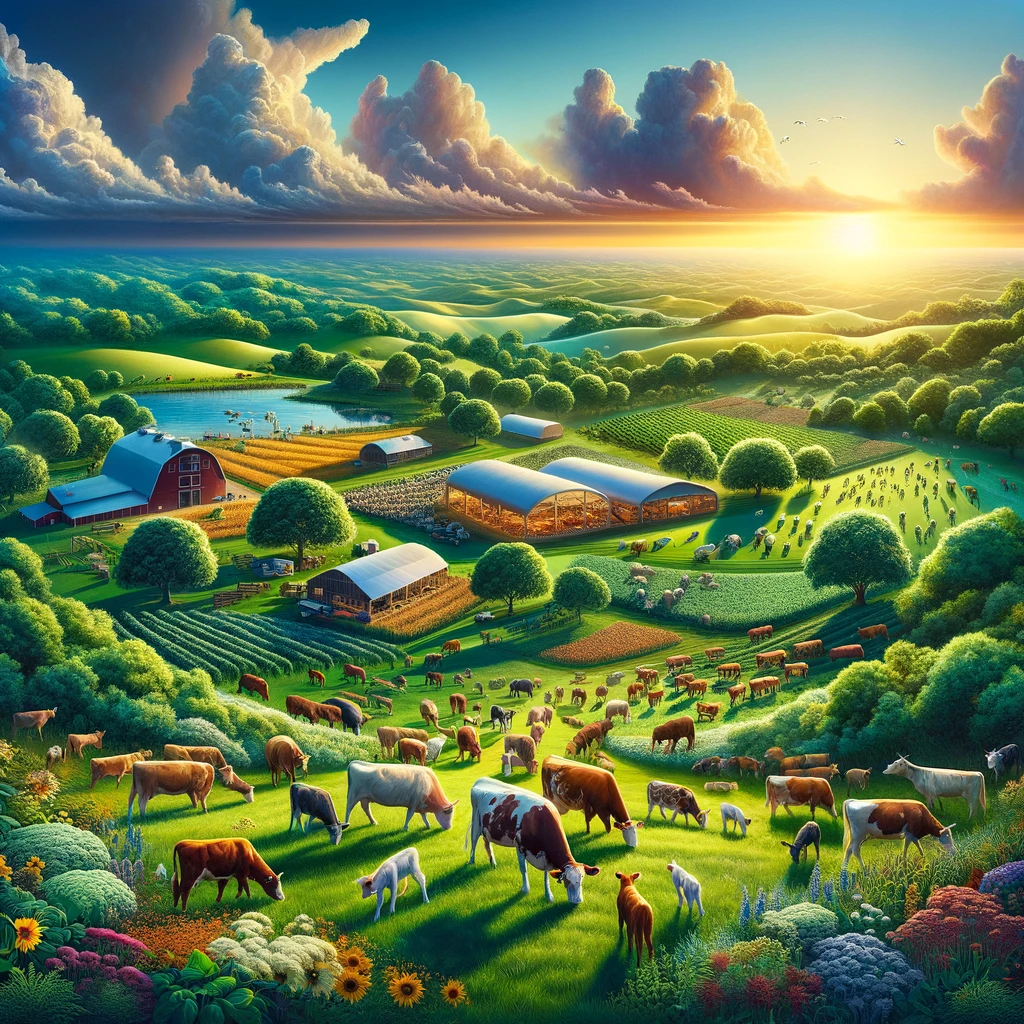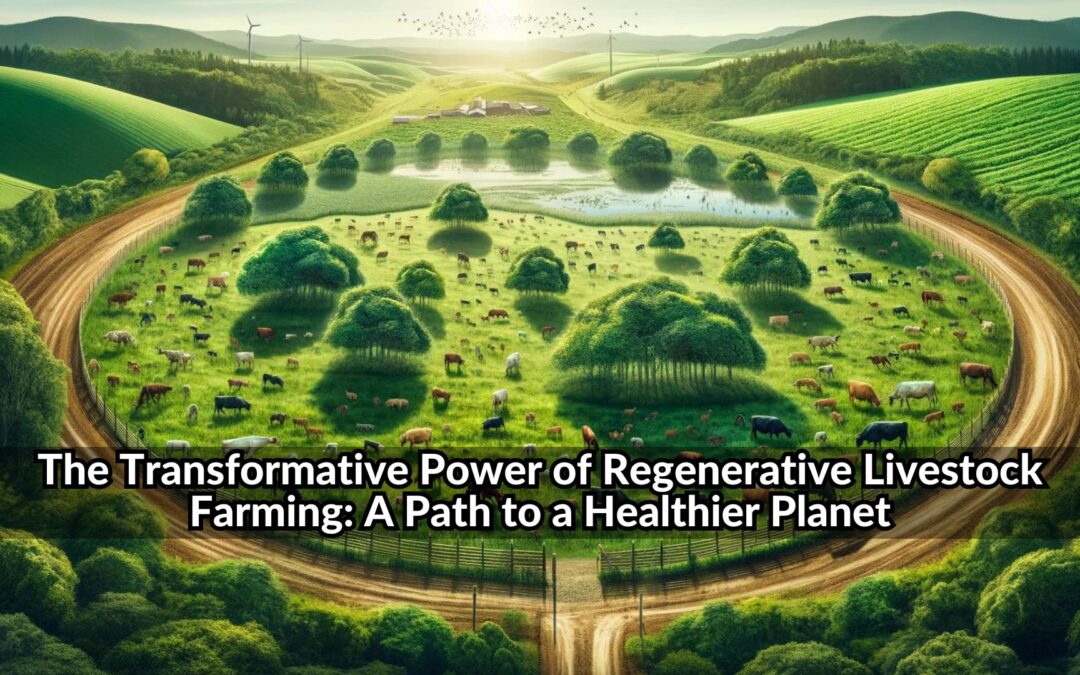In the quest for sustainability and environmental harmony, regenerative livestock farming emerges as a beacon of hope. This innovative approach transcends traditional agricultural methods, spotlighting the symbiotic relationship between agriculture, animal welfare, and ecosystem resilience. Let’s dive into how regenerative livestock farming is shaping a sustainable future, overcoming challenges, and why it’s crucial for us to support this transformative movement.
The Essence of Regenerative Livestock Farming
“Regenerative agriculture represents a paradigm shift in our relationship with the land,” explains a seasoned regenerative farmer. At its core, regenerative livestock farming employs holistic management practices that enrich soil fertility, enhance biodiversity, and bolster ecosystem health—all while ensuring the well-being of livestock. Techniques such as rotational grazing not only prevent overgrazing but also mimic the natural movements of wild herbivores, promoting a dynamic, nutrient-rich soil ecosystem.
A Closer Look at the Environmental Impact
Soil Fertility: A Cornerstone of Health
One of the hallmarks of regenerative farming is its profound impact on soil health. By allowing livestock to graze across various pastures, the soil is naturally fertilized and aerated, laying the foundation for a thriving, diverse plant life. This not only boosts soil fertility but also plays a crucial role in carbon sequestration, offering a natural solution to climate change.
Biodiversity and Water Quality: Nature’s Balance
Furthermore, regenerative practices foster biodiversity, creating habitats for a multitude of species. “It’s all about working with nature rather than against it,” a regenerative practitioner shares. By integrating livestock into diverse ecosystems, these practices support both terrestrial and aquatic life, contributing to cleaner water bodies and a more resilient environment.
Tackling Climate Change: A Carbon Solution
Regenerative livestock farming stands at the forefront of the fight against climate change. Enhanced soil organic matter from rotational grazing and agroforestry captures atmospheric carbon dioxide, effectively reducing the carbon footprint. “Every acre of regenerative farm land is a step towards a cooler planet,” emphasizes an environmental scientist.
Overcoming Challenges: The Road Ahead
Despite its benefits, regenerative livestock farming faces hurdles—economic barriers, educational gaps, and policy challenges. Transitioning to regenerative methods requires initial investment and a shift in traditional farming paradigms, underscoring the need for supportive policies and market incentives. “It’s about building a community that values and understands the importance of regenerative practices,” a farmer advocates.
Why Support Regenerative Livestock Farming?
Supporting regenerative livestock farming is not just about promoting sustainable agriculture; it’s about investing in a healthier planet and future. As consumers, choosing products from regenerative farms can drive demand, encouraging more farmers to adopt these practices. “Every purchase is a vote for the kind of world you want to live in,” a consumer reflects.
In Conclusion
Regenerative livestock farming offers a promising path towards environmental health, sustainability, and resilience. By embracing and supporting these practices, we can contribute to a world where agriculture works in harmony with nature, ensuring a healthier planet for generations to come. Let’s join hands in this transformative journey, for the well-being of our planet, our communities, and ourselves.

Join the Regenerative Agriculture Movement Today!
Are you ready to make a tangible difference in the health of our planet and support a sustainable future? The time to act is now! By choosing products from regenerative livestock farms, you’re not just making an environmentally conscious decision; you’re casting a vote for a world where agriculture nourishes the earth, supports animal welfare, and combats climate change.
Here’s how you can get involved and contribute to the movement:
- Educate Yourself and Others: Knowledge is power. Learn more about regenerative livestock farming and share this valuable information with friends, family, and your community. Awareness is the first step toward change.
- Support Regenerative Farmers: Make a conscious decision to buy meat, dairy, and other products from local, regenerative sources. Your purchasing power encourages more farmers to adopt sustainable practices.
- Advocate for Change: Speak up for policies that support regenerative agriculture. Contact your local representatives and advocate for subsidies and programs that encourage regenerative practices.
- Practice Sustainability at Home: Whether it’s starting a compost bin, reducing food waste, or planting a garden, every little action contributes to a healthier planet.
- Join Community Initiatives: Get involved in local sustainability projects or online forums focused on regenerative agriculture. There’s strength in numbers, and community initiatives play a crucial role in driving change.
Together, we can pave the way for a regenerative future that respects the earth and ensures a thriving planet for future generations. Take action today—your choices have the power to create a positive impact on environmental health, animal welfare, and the well-being of our communities. Let’s embrace the principles of regenerative livestock farming and work towards a sustainable, resilient world. Join our EAT Community for more online learning opportunities!
Related Articles and Resources:
- Understanding regenerative Agriculture and Its impact on the Planet
- Sustainable Agricultural Practices that Farmers Should Embrace
- Why Afforestation and Reforestation Are Essential for Climate Change Mitigation
- Earth’s health failing in seven out of eight key measures, say scientists
You


Recent Comments